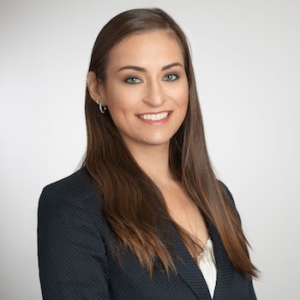PE Firms See the Light in the Sunshine State
By Demitri Diakantonis
June 6, 2022
People are moving to Florida in droves since the pandemic started. In fact, more folks moved there than any other state last year. Tax friendly with no state income tax. Tons of sunshine. And the second most miles of coastline behind Alaska (but we’ll take a waterfront property in Miami over Nome any day of the week).
But individuals aren’t the only ones seeing the light. Private equity firms are opening offices in cities such as Miami and West Palm Beach. Name-brand shops like Los Angeles’ Levine Leichtman Capital Partners, Thoma Bravo and GTCR from Chicago all recently opened offices in the state. There are several reasons for firms taking a shine on the Sunshine State.
“One of the driving factors behind this growth,” says James Cassel, co-founder of Miami-based investment bank Cassel Salpeter & Co. “is the ability for people to work remotely, which has now been validated as an effective practice, and indeed has actually been shown to foster a positive work/life balance, which has been useful for recruiting and retaining top talent. This resulted in people considering relocating to South Florida, not only because they can work remotely, but also because of the economic benefits.”
PE Growth
Lee Bryan, a senior partner at Comvest Partners in West Palm Beach, says his firm recognized the benefits of a Florida presence years ago.
“Some people may not realize that PE has had a sizable presence in Florida for quite some time,” Bryan says. “Comvest’s roots in West Palm Beach date back more than 20 years. Several peers are based in cities like Boca Raton and Miami.” Access to three international airports also makes Florida business-friendly, Bryan adds.
Comvest, which typically invests up to $125 million, has invested in some Florida-based companies since it was founded in 2000 including Bel USA (d/b/a discountmugs.com), a Miami-based printer and online retailer of customized promotional products in 2014, and Leixir Dental Group, a Tampa-based provider of dental solutions with a focus on digital dentistry in 2021.
Sun Capital is another notable PE firm with deep roots in Florida. CoCEOs Marc Leder and Rodger Krouse, who met as classmates at Wharton, set up shop in Boca Raton in 1995 to focus on turnarounds and underperforming companies. They’ve since expanded to New York, Los Angeles and London over the last 26 years and raised seven funds.
Other PE firms are putting down roots here. Levine Leichtman Capital Partners, which raised Fund III at $1.4B last year, opened an office in Miami in 2020, while GTCR opened one in West Palm Beach earlier this year.
Local Deals
But it’s not just the desirable climate that’s pushing these firms south. It’s also the dealflow. Technology is one sector in particular that has been seeing robust local deal activity.
“The growing local tech sector has brought a new crop of companies that are available for acquisition, which in turn has brought a new crop of buyers looking for opportunities in traditionally overlooked areas,” Cassel adds.
In 2021, Thoma Bravo opened an office in Miami citing the region’s growing tech sector. “Establishing an office in Miami has not only expanded and enhanced our presence in the U.S., but also provided a gateway to other national and global markets to help support Thoma Bravo’s overall growth,” says Chip Virnig, a partner at Thoma Bravo. “Since we opened our office last year, our team in Miami has grown to 45 people, including a number of new hires attracted to our collegial and entrepreneurial culture. Miami is a vibrant and growing tech and financial hub that’s welcoming and fostering innovative thinking.”
Cassel sees this trend as well. “There are a lot of technology companies that are growing and maturing that could be great candidates for acquisition and that is driving buyer interest,” he says. “There has been a major commitment to pushing South Florida to build its tech sector. Mayor Suarez of Miami is active in support of bringing new companies to South Florida and helping them find the right resources. There are also a growing number of incubators and accelerators, along with a growing base of angel investors. With Covid, people can work from anywhere, so now many tech entrepreneurs are choosing South Florida as their base.”
As an example, Cassel cites SaaS Provider Pros’ (NYSE: PRO) acquisition of Miami-based digital marketer EveryMundo for up to $90 million in November. Pros offers software that is designed to improve shopping and selling experiences. EveryMundo, a bootstrapped growth story started in 2006, is known for helping airlines sell offers directly to consumers.
“Many times, especially for tech companies because tech companies can change very rapidly, they decide to sell,” says Cassel, whose firm co-advised EveryMundo. “Sometimes they sell because they hit a wall in their ability to raise capital and other times, they determine it’s better to be part of a larger organization.”
In another local deal, commercial bank Truist Financial Corp. (NYSE: TFC) completed its acquisition of Service Finance Co. in December 2021. Boca Raton-based Service Finance uses proprietary technology to offer financing and lending services to contractors and other consumers that are used towards home improvements. The majority of Service Finance’s loan applications are completed on its mobile application.
PE firms will go wherever deals are flowing and right now that place is South Florida. “PE firms will increasingly move to or open offices in South Florida as a result of the many attributes this area has to offer,” Comvest’s Bryan says. “We expect this growth trend to continue.”
Click here to read the PDF.
Click here to read the full article.










